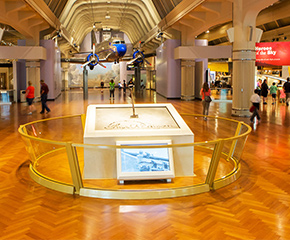Charles Ponti Megalethoscope, 1862
Add to SetSummary
Invented by Carlo Ponti in the early 1860s, a megalethoscope is a device used to view a translucent, multilayered photograph. By opening or closing various panels, a person saw the image change. When lit from behind, pinpricks and paint or colored tissue applied to the back or a secondary layer of the photograph transform the scene to reveal hidden images and create an illusion of nighttime.
Invented by Carlo Ponti in the early 1860s, a megalethoscope is a device used to view a translucent, multilayered photograph. By opening or closing various panels, a person saw the image change. When lit from behind, pinpricks and paint or colored tissue applied to the back or a secondary layer of the photograph transform the scene to reveal hidden images and create an illusion of nighttime.
Artifact
Megalethoscope
Date Made
1862
Location
Not on exhibit to the public.
Object ID
32.742.113
Credit
From the Collections of The Henry Ford.
Material
Wood (Plant material)
Glass (Material)
Paper (Fiber product)
Color
Brown
White (Color)
Black (Color)
Dimensions
Height: 25 in
Width: 18.5 in
Length: 32.75 in
Inscriptions
on label on object: [...] / MEGALETHOSCOPE DE CHARLES PONTI. / brevet d'invention / POUR / l'Autriche, La France et l'Angleterre. / Grande medaille a l'exposition de Londres en 1862. / decernee a l'opticien / CHARLES PONTI. / [... ] / A VENISE / Quai des Esclavons No 1180 et Place St. Mare. / Procuratie nuove No 52. on plate across front: MEGALETOSCOPIO handwritten on back edge of slide: Ponte dei Sophiri / Venezia / Bridge of Sighs





